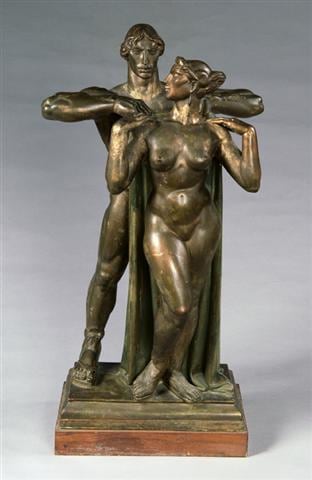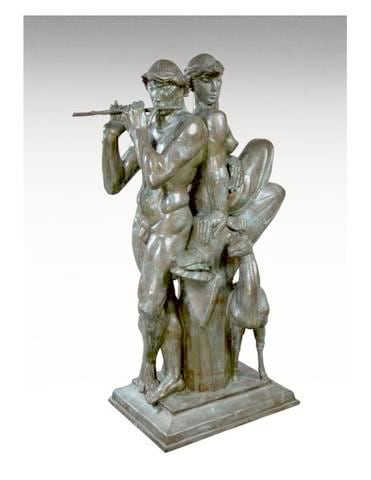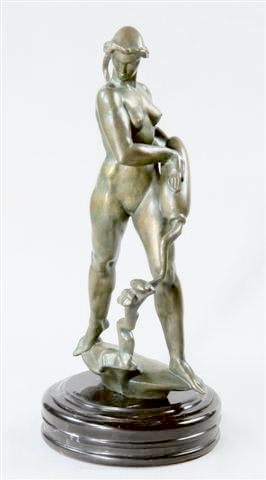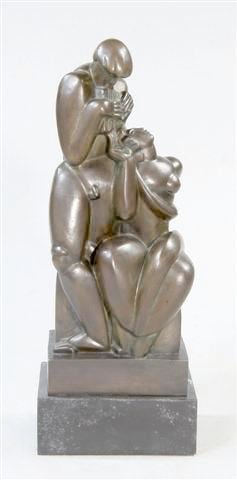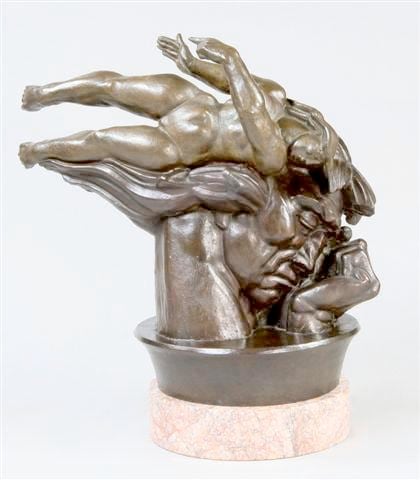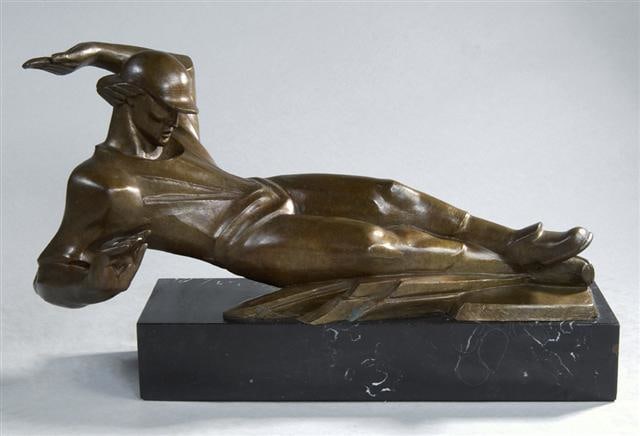Albert Wein: An American Modernist
September 4, 2008 - November 29, 2008
Albert Wein: An American Modernist
at the Boston Athenaeum, September 17- November 29, 2008
This retrospective exhibition features lifetime works by notable artist Albert Wein, N.A. and is the first major exhibition of the artist’s oeuvre in several decades. The exhibition will be accompanied by the first major monograph on the artist’s life and work, written and curated by the Athenaeum’s Susan Morse Hills Curator of Paintings and Drawings, David Dearinger.
Levis Fine Art is proud to be a major supporter of the artistic legacy of Albert Wein as well as lending a majority of important lifetime works to the exhibition.
Influence remains as precious to an artist as their tools; it is the strength and foundation upon which they test their own artistic abilities, resulting in a unique inner voice, one which resonates in each stroke and contour throughout their body of work. Multi-dimensional artist, Albert Wein, N.A. serves as an exemplary artist who built upon his influences, ultimately transcending his voice across a range of themes, mediums and styles. His willingness to experiment with such a variety of influences provides a clearer understanding of his lifetime commitment to “modernize the classical tradition”.
Beginning with his studies at the Maryland Institute and the National Academy of Design, during the late 1920’s, Wein received incredible support and guidance in the period of classical antiquity. By the early 1930’s Wein had enrolled in the Beaux-Arts Institute of Design in Manhattan, looking to pursue a career which was architecture based, but art oriented. His sculpture, Adam, portrays both the strength of physical space and the delicacy of emotion, a revelation of what would become his signature style. Notable artists such as Chaim Gross, Ibram Lassaw and Nathaniel Kaz were just a few of the well-accomplished on the Institute’s list of students at the time, but Sidney Waugh a teacher at the Institute, would be credited with having the most impact on Wein’s artistic ideologies. Waugh appealed to Wein’s unrelenting infatuation with multi-dimension and multi-medium works of art. From the earliest stages in Wein’s artistic development, he simultaneously used different mediums.
Wein’s early career proved highly successful as he won many of the major awards from the National Sculpture Society, National Academy of Design and Architectural League. The most prestigious of awards, the Prix de Rome, was bestowed upon Albert in 1947 for his obvious commitment to the modernization of the classical canon. Beethoven, Dancing Girl, Phryne and Homage to Bela Bartok were all created while Wein studied and worked in Rome during 1947 and 1948. Each work addresses Wein’s approach to providing only the necessary of details with a consistent focus on the nude female figure as a subject. The monumentality of these small works transcends their physical space and emotional dynamism.
Wein’s infatuation with the female form prevailed throughout his career. Like other notable modernists, his style dramatically changed over his oeuvre, making amends for certain artistic styles and themes concurrent with the times. His earliest works heavily reference the W.P.A. style of massive, powerful figures, as seen in Harvest, while his works dating from the late 1940’s reveal a softer, perhaps more mindful approach towards the human form; a style he would later return to in the 1970’s. Even during Wein’s abstract period of the 1950’s and 60’s, his utilization and adaptation of the classical form is evident. It is in these pieces that his true voice is most vulnerable and apparent; everything has been pared down and the only remnant is raw emotion and pure form. This striking combination can be best seen in his abstract pieces.
In 1979 Wein won the commission to create the design for the Libby Dam on the Kootenai River in Montana. This 30 foot granite bas relief remains Wein’s most important and most technically challenging work of art created. Both the concept and the work itself gained Wein national attention and allowed him to work side by side an architect; proving to be the fulfillment of a lifetime desire of combining art and architecture.
Wein’s last major award was granted by the Rockefeller Foundation in 1989 and allowed Wein one last opportunity to study from the classical canon firsthand. The drawings from this period reflect incredible fluidity and ease depicting the human figure.
Wein’s notable and varied exhibition history including the Metropolitan Museum of Art and the Whitney, support the recognition of his unique ability to master the human form in any material, whether bronze, wood, or terracotta. His unrelenting dedication to the human form, to the classical canon and to the modernization of both, reflect the ingenuity of an artist willing to take risks and separate himself from the average.
Please see our website for the full curriculum vitae of Wein’s academic training, awards, commissions and collections. Contact Jim Levis at 646-620-5000 or Jim@levisfineart.com for more information on the pieces listed or others for sale in our inventory.
© 2008 Levis Fine Art, Inc

